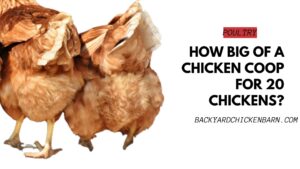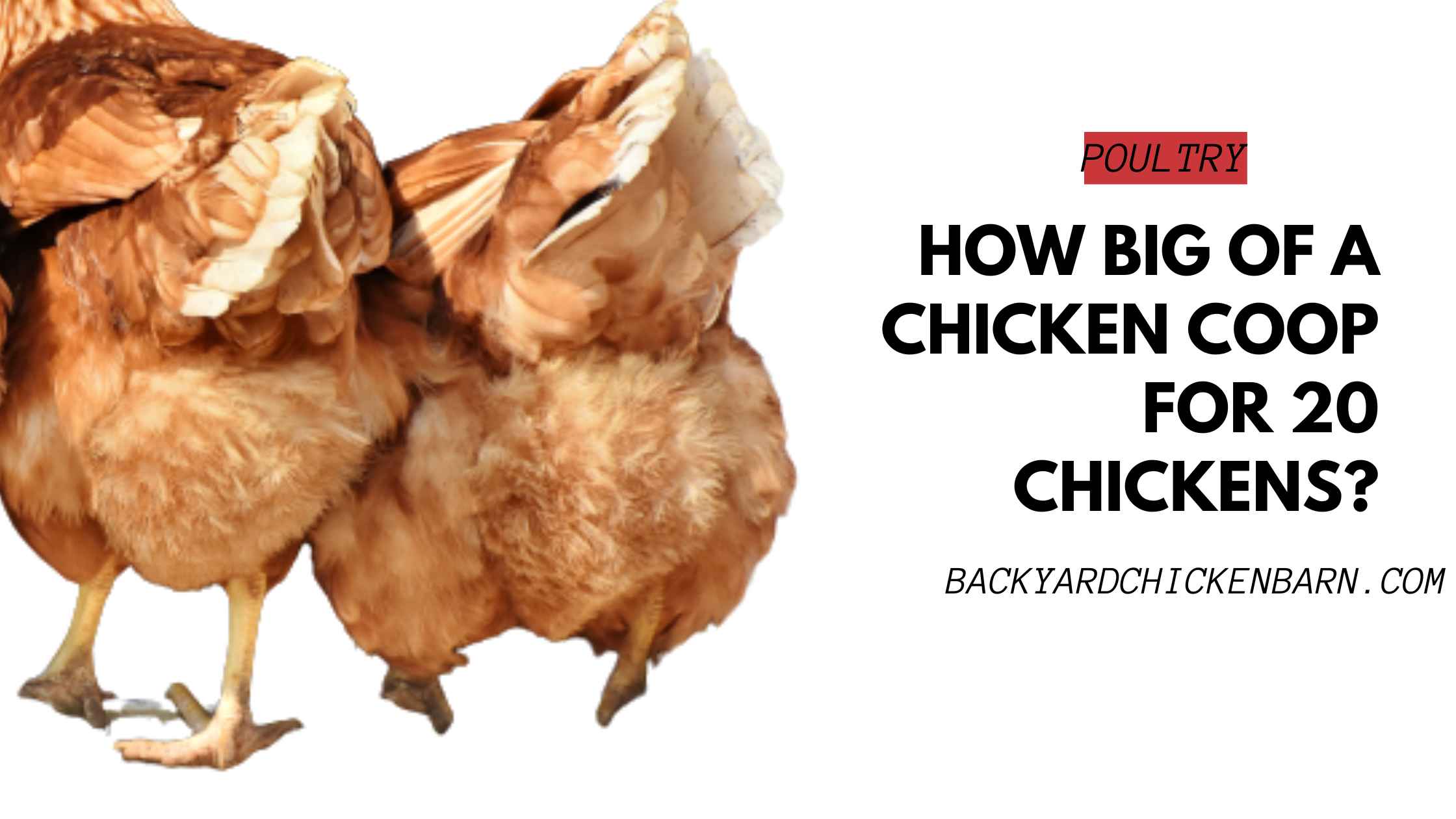How to Bury Hardware Cloth for Chicken Coop
In the vast world of poultry keeping, many details matter – and some of those details lie beneath the surface, quite literally.
One such detail I’ve personally found essential is effectively burying hardware cloth for the chicken coop.
Predators are crafty, and they don’t only try to break in from the sides or above – some dig their way in from below.
To put it plainly, to ensure maximum protection for your flock, you should bury the hardware cloth at least 12 to 18 inches deep around the perimeter of the coop and run.
Now, let’s dive into the details of the process that I’ve fine-tuned over time:
1. Choose the Right Hardware Cloth:
Not all hardware cloth is created equal. Opt for a galvanized, 1/2-inch mesh. This size prevents even the smallest of predators, like weasels, from squeezing through.
2. Measure and Cut:
Assess the perimeter of your coop and run. Cut your hardware cloth into strips that are at least two feet wide.
This will provide ample width for burying and attaching to the coop’s base.
3. Dig a Trench:
Using a shovel or a garden spade, dig a trench around the coop’s perimeter. It should be 12 to 18 inches deep, and roughly the width of the hardware cloth.
4. Lay the Hardware Cloth:
Place one edge of the hardware cloth against the coop’s base, ensuring it stands vertically to the height you desire (this typically is a few inches above ground level). The rest should lay outward, covering the bottom of your trench.
5. The L-Shaped Barrier:
For added protection, you can bend the cloth into an L-shape before placing it in the trench. This horizontal flap deters diggers, as they typically start their digging right next to the coop’s wall.
When they encounter the buried horizontal barrier, they’re less likely to keep digging.
6. Refill and Compact:
Once the cloth is properly positioned, refill the trench with the excavated soil. Compact it firmly using your feet or a tool to ensure there are no loose spots.
This also helps to anchor the cloth securely.
7. Secure the Vertical Edge:
Affix the hardware cloth to the base of your coop using sturdy staples or screws with washers. This ensures no predator can push or pull it away.
8. Double-check for Gaps:
After installation, walk around and inspect for gaps or weak spots. Remember, predators can be persistent, so a thorough check is crucial.
9. Maintenance:
Over time, erosion or other natural factors might expose the hardware cloth. It’s a good habit to inspect the perimeter every few months and add more soil or make adjustments as needed.
10. Peace of Mind:
With the hardware cloth securely buried, you can rest easier knowing your flock has an added layer of protection from digging predators.
In conclusion, while the task might seem daunting initially, the peace of mind it brings is worth the effort.
In my poultry-keeping journey, I’ve realized that it’s often the unseen barriers that offer the most protection.
And in this case, what’s out of sight beneath the ground plays a pivotal role in ensuring our feathery friends remain safe and sound.
ALSO SEE: How Big of a Chicken Coop for 20 Chickens?

FAQs on Burying Hardware Cloth for Chicken Coop Security
1. Why should I bury hardware cloth for my chicken coop? To prevent predators from digging and accessing your coop from below.
2. How deep should the hardware cloth be buried? It’s recommended to bury it 12 to 18 inches deep around the perimeter.
3. What kind of hardware cloth should I choose? Opt for a galvanized, 1/2-inch mesh to ensure even the smallest predators can’t squeeze through.
4. How wide should the strips of hardware cloth be? Cut them at least two feet wide for sufficient burying and attachment to the coop’s base.
5. Can I use tools other than a shovel to dig the trench? Yes, a garden spade or similar tools can also be effective.
6. What’s the purpose of the L-shape in the hardware cloth? It serves as an additional barrier, discouraging predators that begin digging right next to the coop.
7. How do I ensure the hardware cloth remains in place after burying? Compact the soil firmly and attach the cloth securely to the coop’s base using staples or screws.
8. How often should I inspect the buried hardware cloth? Inspecting every few months is a good practice to catch any potential exposures or weak spots.
9. Can predators pull away the hardware cloth if not secured well? Yes, hence it’s crucial to affix it properly to the coop’s base.
10. What should I do if I find gaps or weak spots during inspection? You should immediately add more soil or make necessary adjustments to eliminate vulnerabilities.
11. Does hardware cloth rust over time? If you choose galvanized hardware cloth, it offers better resistance to rust.
12. Can I use chicken wire instead of hardware cloth? While chicken wire might deter some predators, its larger gaps make it less secure than the 1/2-inch hardware cloth.
13. How does buried hardware cloth affect coop cleaning? It doesn’t impact regular cleaning but enhances security against digging predators.
14. Does burying hardware cloth affect the coop’s overall appearance? No, once the cloth is buried and the soil compacted, it blends seamlessly with the surroundings.
15. Is it essential to compact the soil after burying the hardware cloth? Yes, compacting the soil helps anchor the cloth securely and reduces loose spots.
16. Can predators like foxes and raccoons dig deeper than 18 inches? While some might dig deep, they typically start digging right next to the coop. The L-shape barrier discourages further digging.
17. How can I maintain the effectiveness of the buried hardware cloth? Regular inspections and addressing any weak spots or erosions promptly will ensure its effectiveness.
18. Can buried hardware cloth deter snakes? The 1/2-inch mesh design of the hardware cloth can prevent even smaller snakes from entering.
19. Will the buried hardware cloth affect water drainage around my coop? If installed correctly, it shouldn’t impede regular water drainage.
20. Is it possible for the cloth to move or shift underground? If properly compacted and secured to the coop’s base, movement is minimal.
21. Are there alternatives to hardware cloth for burying? While there are other materials, galvanized hardware cloth offers the best balance of durability and security.
22. How can I detect if a predator has tried to dig near the hardware cloth? Regular inspections will show signs of attempted digs, like loose soil or visible cloth.
23. Is the process of burying hardware cloth time-consuming? While it requires effort, the time spent ensures long-term security for your flock.
24. Do I need professional help to bury hardware cloth? With the proper tools and guidelines, most individuals can manage the task.
25. How can I determine the length of hardware cloth I’ll need? Measure the perimeter of your coop and run before purchasing.
26. Can I overlap sections of hardware cloth for added protection? Yes, overlapping can create an even more secure barrier.
27. What tools do I need for this task? A shovel or garden spade, scissors or wire cutters for the cloth, and staples or screws for attachment are essential.
28. Will burying hardware cloth affect the coop’s mobility if it’s a movable coop or “chicken tractor”? For movable coops, consider alternative protection methods or moveable barriers, as burying isn’t feasible.
29. Can the buried cloth affect plant growth around the coop? Plants should grow normally, but avoid planting directly over the buried cloth.
30. Do I need to remove the hardware cloth if relocating the coop? If you’re moving the coop permanently, you might want to retrieve and reuse the hardware cloth.
31. How can I prevent erosion from exposing the buried cloth? Planting grass or other ground cover can help hold the soil in place.
32. Should I consider the type of soil when burying hardware cloth? While the type of soil can affect digging ease, the burial depth remains consistent.
33. How do I join two sections of hardware cloth securely? Overlapping and using wire ties or hog rings can ensure a secure connection.
34. Are there visual cues to spot digging attempts? Displaced or loosened soil and visible footprints are common signs.
35. Can I bury the hardware cloth even deeper for added security? Yes, but 12-18 inches is typically sufficient for most predators.
36. Is hardware cloth safe for the chickens? Yes, its primary purpose is protection without causing harm.
37. Can I use hardware cloth for the coop’s roof? Yes, it’s an effective deterrent against aerial predators like hawks.
38. How does buried hardware cloth fare in snowy or icy conditions? The cloth remains effective, but regular inspections are key to ensuring no sections are exposed.
39. Can the L-shape method be used for all sides of the coop? Yes, it provides consistent protection around the entire perimeter.
40. How cost-effective is burying hardware cloth compared to other security measures? While there’s an initial cost for the cloth and effort, its long-term effectiveness and peace of mind make it a valuable investment.



